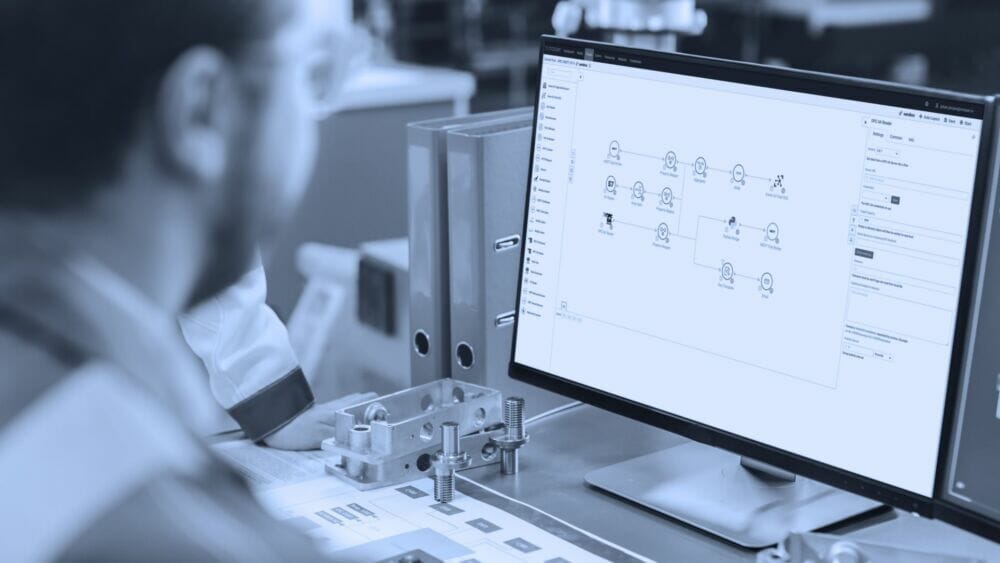~ Why edge analytics should be part of an IIoT strategy ~
In a 2019 report from Forrester, 69 per cent of decision makers said that prioritizing edge Internet of Things (IoT) processes would improve their ability to meet IoT objectives. And they aren’t wrong. Eventually, it won’t be possible for all data to be stored and monitored in the cloud — this is where edge analytics offers an olive branch. Here, Johan Jonzon, CMO and Co-Founder of pioneer in edge analytics for the Industrial Internet of Things (IIoT) Crosser, looks at why edge analytics should be a key part of an IIoT strategy in manufacturing.
Gartner predicts that, by 2025, more than 75 per cent of enterprise-generated data will be created and processed outside the traditional data center or cloud. Gaining access to relevant data in a central location, either a cloud or a data center, is key to making changes and meeting business objectives. Companies must therefore ensure data is received in a faster, more secure and cost-effective way by making edge analytics a key part of their IIoT strategy.
Edge systems hold numerous benefits for the manufacturing industry. Relevant data can be transmitted from the edge so that businesses can act on insights in real-time. The reduced distance between the server and end-user enables quicker data analysis and decision-making.
In addition to delivering faster insights, the sheer volume of data that connected devices are creating is making edge analytics a necessity. According to International Data Corporation (IDC), “every connected person in the world will have at least one digital data interaction every 18 seconds”. If we consider just how many IIoT devices are available in a smart manufacturing plant, we can quickly see why manufacturing needs the edge.
Strategy on the edge
Manufacturers must manage all their devices while maintaining a competitive edge, and in ways that complement how their plant operates. Numerous devices can benefit from edge analytics in Industry 4.0 environments, like smart factories. Each device generates critical data that needs processing and should be acted upon to support lean and efficient operations.
Edge analytics can play a crucial role in monitoring asset performance — specifically equipment health. Edge analytics can be used to aid condition-based maintenance (CBM), which uses sensor data to assess equipment heath. Insights from the equipment are sent back to a central location, at a speed much faster than any cloud solution can provide, enabling plant managers to instantly react and devise a maintenance strategy, saving costs. In fact, it’s estimated companies can recover as much as half their annual maintenance budget by aligning maintenance investment to asset condition.
Edge analytics is also versatile enough so that any type or age of plant can adopt the technology. For example, edge analytics is also used to harmonize data, which means different datasets are converted into a common format for machine compatibility. This is ideal for factories with legacy equipment that collects data in different ways, ensuring all devices — old or new — are incorporated into the edge system.
Uncovering equipment data
One manufacturer that has benefited from edge analytics software is Rubble Master, which specializes in mobile equipment for the mineral processing industry.
Rubble Master wanted edge software that would allow its fleet of 4,000 machines to collect, filter and store data to help machine operators gain valuable insights into machine health and status, and better connect with end users. For this, it turned to Crosser, specifically its low-code platform for streaming analytics.
In the end, Rubble Master was satisfied with Crosser’s software. In the words of Markus Gaggl, Chief Technology Officer (CTO) at Rubble Master, “We believe edge analytics is key to uncovering equipment data.” Because it helps manufacturers realize these benefits through edge software, Crosser was recently named one of the Top 5 Edge Analytics Start-Ups in the world by Start Us Insights.
Only two years ago, it was imagined that edge analytics could improve manufacturers’ ability to meet their IIoT objectives. It’s now clear that edge analytics can support manufacturers’ IIoT strategies as more companies get onboard. By getting closer to the edge, manufacturers can gain faster insights into their processes and manage quicker and more efficient production operations.
To learn more about Crosser and its edge solutions, visit https://crosser.io/








